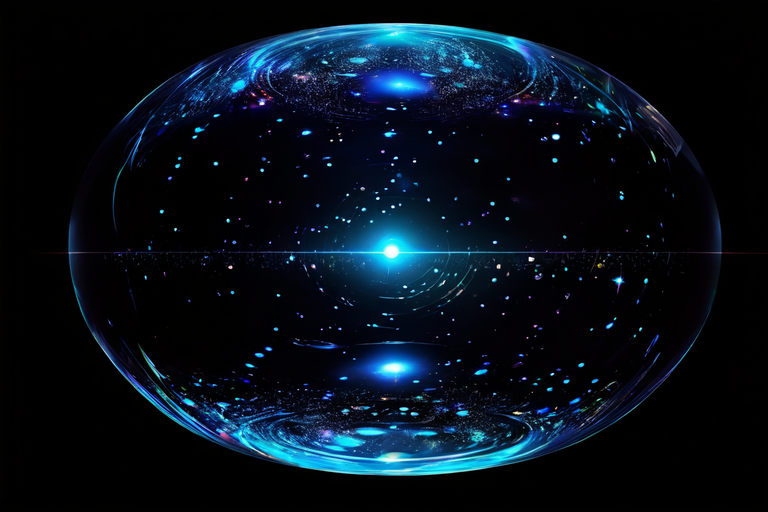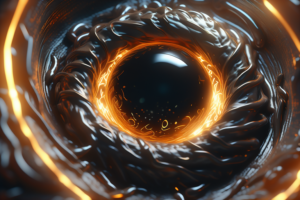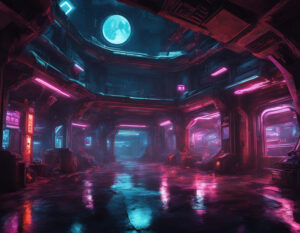The holographic principle, a fascinating concept in theoretical physics, proposes that the entirety of our three-dimensional universe could be encoded on a two-dimensional boundary, like a vast cosmic projection. While not a theory of everything, it has captured the imagination of scientists and the public alike, offering a glimpse into a potentially radical perspective on reality.
Understanding the Hologram Analogy:
Imagine a holographic image, where a three-dimensional object is reconstructed from information encoded on a two-dimensional surface. The holographic principle suggests that our universe, in a similar way, might be a three-dimensional manifestation of information residing on a lower-dimensional boundary. This boundary could be a hypothetical surface at the edge of the observable universe or even something entirely different beyond our current comprehension.
The Origins of the Holographic Principle:
The concept arose from string theory, a theoretical framework attempting to unify the fundamental forces of nature. In the context of string theory, physicist Gerard ‘t Hooft observed a curious relationship between the properties of black holes and the information they carry. He proposed that the information about everything swallowed by a black hole, not just its mass and energy, could be encoded on its two-dimensional event horizon, the boundary beyond which nothing escapes. This observation sparked further exploration by Leonard Susskind and others, leading to the development of the holographic principle.
Implications and Applications:
The holographic principle, while still theoretical, has several potential implications:
- Reconciling Gravity and Quantum Mechanics: One of the major challenges in physics is unifying the theory of general relativity, governing gravity, with quantum mechanics, describing the behavior of matter and energy at the atomic and subatomic level. The holographic principle offers a potential framework to bridge this gap, suggesting that gravity might emerge from the information encoded on the boundary.
- Understanding the Nature of Space and Time: The concept challenges our traditional notions of space and time. If the universe is a hologram, the apparent three-dimensionality we experience might be an illusion, arising from the underlying information structure.
- Cosmology and the Big Bang: The holographic principle could also offer insights into the origin and evolution of the universe. It may provide alternative explanations for phenomena like the Big Bang and dark energy.
Limitations and Unknowns:
It’s important to remember that the holographic principle is not a complete theory and faces several limitations:
- Lack of Experimental Verification: Currently, there is no way to experimentally test the validity of the holographic principle. It remains a theoretical framework awaiting further development and potential experimental verification in the future.
- Mathematical Challenges: The mathematical framework surrounding the holographic principle is still under development, and there are significant challenges in applying it to our actual universe.
Exploring the Holographic Frontier:
Despite the limitations, the holographic principle continues to be a vibrant area of research, inspiring physicists and philosophers to explore the nature of reality and the fundamental laws governing our universe. As our understanding of the cosmos evolves, the possibility of a holographic universe, while seemingly outlandish, may one day hold the key to unlocking some of the deepest mysteries of existence.
Further Exploration:
If you’d like to delve deeper into the holographic principle, you can explore these resources:
- “Why the universe might be a hologram” by Paul M. Sutter https://www.universetoday.com/164875/why-the-universe-might-be-a-hologram/
- “The Holographic Universe Explained” on YouTube https://www.youtube.com/watch?v=klpDHn8viX8
- “Holographic Principle” on Wikipedia https://en.wikipedia.org/wiki/Holographic_principle





